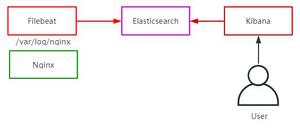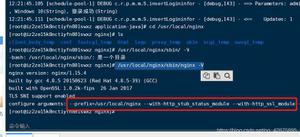简单定向边界框OBB碰撞检测解释
我可以实现AABB方法来检测碰撞,它很容易且便宜,但是我想实现OBB以获得更高的精度,所以我创建了包含8个边界的模型初始化的边界框顶点和中心,每帧我转换所有的顶点与变换矩阵,以适应定向包围盒,但我不明白的方法来检测两个OBB之间的碰撞,我找不到一个简单和清晰的教程,解释算法与代码观点不是数学,因为我不是数学家。简单定向边界框OBB碰撞检测解释
,如果我有
struct Box { glm::vec3 vertices[8];
Box() {
for (int i = 0; i < 8; i++) {
vertices[i] = glm::vec3(0);
}
}
glm::vec3 max;
glm::vec3 min;
glm::vec3 origin;
void reCompute() {
max = vertices[0];
min = vertices[0];
for (int i = 1; i < 8; i++) {
max.x = max.x > vertices[i].x ? max.x : vertices[i].x;
max.y = max.y > vertices[i].y ? max.y : vertices[i].y;
max.z = max.z > vertices[i].z ? max.z : vertices[i].z;
min.x = min.x < vertices[i].x ? min.x : vertices[i].x;
min.y = min.y < vertices[i].y ? min.y : vertices[i].y;
min.z = min.z < vertices[i].z ? min.z : vertices[i].z;
}
origin = glm::vec3((max.x + min.x)/2.0f, (max.y + min.y)/2.0f, (max.z + min.z)/2.0f);
}
//AABB intersection
bool intersects(const Box &b) const {
return (min.x < b.max.x) && (max.x > b.min.x) && (min.y < b.max.y) && (max.y > b.min.y) && (min.z < b.max.z) && (max.z > b.min.z) && *this != b;
}
bool operator==(const Box& b) const {
return (max.x == b.max.x && max.y == b.max.y && max.z == b.max.z && min.x == b.min.x && min.y == b.min.y && min.z == b.min.z);
}
bool operator!=(const Box& b) const {
return (max.x != b.max.x) || (max.y != b.max.y) || (max.z != b.max.z) || (min.x != b.min.x) || (min.y != b.min.y) || (min.z != b.min.z);
}
};
box.vertices[0] = glm::vec3(meshMinX, meshMinY, meshMinZ); box.vertices[1] = glm::vec3(meshMaxX, meshMinY, meshMinZ);
box.vertices[2] = glm::vec3(meshMinX, meshMaxY, meshMinZ);
box.vertices[3] = glm::vec3(meshMaxX, meshMaxY, meshMinZ);
box.vertices[4] = glm::vec3(meshMinX, meshMinY, meshMaxZ);
box.vertices[5] = glm::vec3(meshMaxX, meshMinY, meshMaxZ);
box.vertices[6] = glm::vec3(meshMinX, meshMaxY, meshMaxZ);
box.vertices[7] = glm::vec3(meshMaxX, meshMaxY, meshMaxZ);
,每帧
我重新计算与模型
for (int n = 0; n < 8; n++) { boxs[j].vertices[n] = glm::vec3(matrix * glm::vec4(box.vertices[n], 1));
}
boxs[j].reCompute();
回答:
的变换矩阵箱知道两个OBB碰撞你使用SAT(分离轴定理):你必须投影这两个点的所有点在两个形状的每个法线上形状。然后你会看到两个形状的投影是否重叠在每个法线上都有碰撞。如果至少有一个没有重叠的法线,它们不会相互碰撞。所有这一切,你需要一种方法来做一个矢量在另一个上的正交投影,并返回一个标量,并且用一个方法来检查两个区间是否重叠。 我有一些代码,但它的Java:
/** * Vec u is projected on Vec v
* @param u 2d point
* @param v 2d axe
* @return the orthogonal projection
*/
public static float orthagonalProjectionOf(Vector2f u, Vector2f v){
float norme_u = u.lenght();
float norme_v = v.lenght();
float dot_u_v = dot(u, v);
float buffer = (dot_u_v/(norme_u*norme_v))*norme_u;
if(Float.isNaN(buffer))return 0;//If the vector u is null, then is orthogonal projection is 0, not a NaN
else return buffer;
}
重叠两类区间的:
/** * Get the overlapping of two interval on an axis.
* @param minA
* @param maxA
* @param minB
* @param maxB
* @return true overlapping. false if there is no overlapping
*/
public static boolean isOverlapping(float minA, float maxA, float minB, float maxB) {
float minOverlap = Float.NaN;
float maxOverlap = Float.NaN;
//If B contain in A
if(minA <= minB && minB <= maxA) {
if(Float.isNaN(minOverlap) || minB < minOverlap)minOverlap = minB;
}
if(minA <= maxB && maxB <= maxA) {
if(Float.isNaN(maxOverlap) || maxB > minOverlap)maxOverlap = maxB;
}
//If A contain in B
if(minB <= minA && minA <= maxB) {
if(Float.isNaN(minOverlap) || minA < minOverlap)minOverlap = minA;
}
if(minB <= maxA && maxA <= maxB) {
if(Float.isNaN(maxOverlap) || maxA > minOverlap)maxOverlap = maxA;
}
if(Float.isNaN(minOverlap) || Float.isNaN(maxOverlap))return false; //Pas d'intersection
else return true;//Intersection
}
随着你都能够做到的方法来测试的U开V
Orthagonal投影两个OBB之间的碰撞:
public boolean OBBwOBB(RigidBody bodyA, RigidBody bodyB) { Shape shapeA = bodyA.getObb().getShape();
Shape shapeB = bodyB.getObb().getShape();
short overlapCompt = 0;
//We test for each normal the projection of the two shape
//Shape A :
for(int i = 0; i < shapeA.getNbrOfNormals(); i++) {
Vector2f normal = shapeA.getNormal(i, bodyA.getAngle());
boolean overlap = overlapOnThisNormal(bodyA, bodyB, normal);
if(overlap) {
overlapCompt++;
}
}
//Shape B :
for(int i = 0; i < shapeB.getNbrOfNormals(); i++) {
Vector2f normal = shapeB.getNormal(i, bodyB.getAngle());
boolean overlap = overlapOnThisNormal(bodyA, bodyB, normal);
if(overlap){
overlapCompt++;
}
}
//Now we see if there is a collision
short howManyNormals = (short) (shapeA.getNbrOfNormals() + shapeB.getNbrOfNormals());
if(overlapCompt == howManyNormals){//If the number of overlap equal the number of normal in both shape :
return true;
}
else return false;
}
而且您将需要它t为两个形式投影在向量的投影的最小值和最大值:
/** * Test if the orthogonal projection of two shape on a vector overlap.
* @param bodyA
* @param bodyB
* @param normal
* @return null if no overlap, else Vector2f(minOverlaping, maxOverlaping).
*/
public static boolean overlapOnThisNormal(RigidBody bodyA, RigidBody bodyB, Vector2f normal) {
Shape shapeA = bodyA.getObb().getShape();
Shape shapeB = bodyB.getObb().getShape();
//We test each vertex of A
float minA = Float.NaN;
float maxA = Float.NaN;
for(short j = 0; j < shapeA.getNbrOfPoint(); j++){
Vector2f vertex = shapeA.getVertex(j, bodyA.getScale().x, bodyA.getScale().y, bodyA.getPosition().x, bodyA.getPosition().y, bodyA.getAngle());
float bufferA = Vector2f.orthagonalProjectionOf(vertex, normal);
if(Float.isNaN(minA) || bufferA < minA)minA = bufferA;//Set min interval
if(Float.isNaN(maxA) || bufferA > maxA)maxA = bufferA;//Set max interval
}
//We test each vertex of B
float minB = Float.NaN;
float maxB = Float.NaN;
for(short j = 0; j < shapeB.getNbrOfPoint(); j++){
Vector2f vertex = shapeB.getVertex(j, bodyB.getScale().x, bodyB.getScale().y, bodyB.getPosition().x, bodyB.getPosition().y, bodyB.getAngle());
float bufferB = Vector2f.orthagonalProjectionOf(vertex, normal);
if(Float.isNaN(minB) || bufferB < minB)minB = bufferB;//Set min interval
if(Float.isNaN(maxB) || bufferB > maxB)maxB = bufferB;//Set max interval
}
//We test if there overlap
boolean overlap = isOverlapping(minA, maxA, minB, maxB);
return overlap;
}
我希望这个帮你;)
以上是 简单定向边界框OBB碰撞检测解释 的全部内容, 来源链接: utcz.com/qa/262563.html








